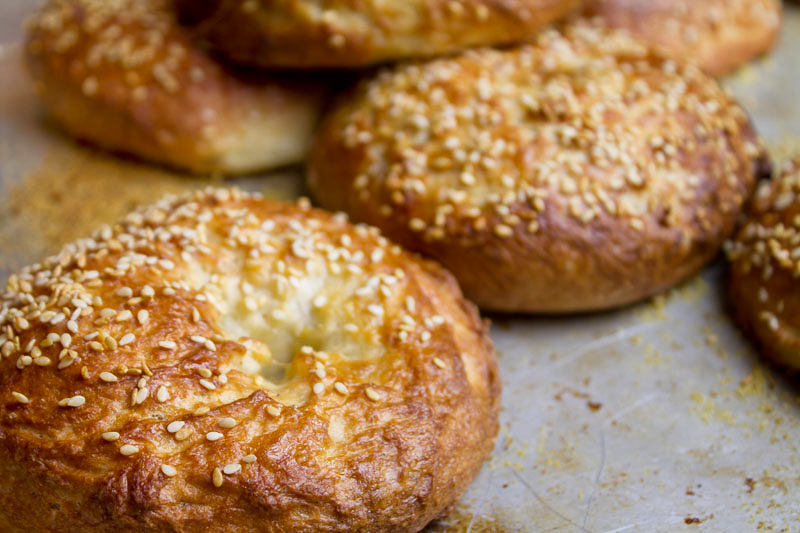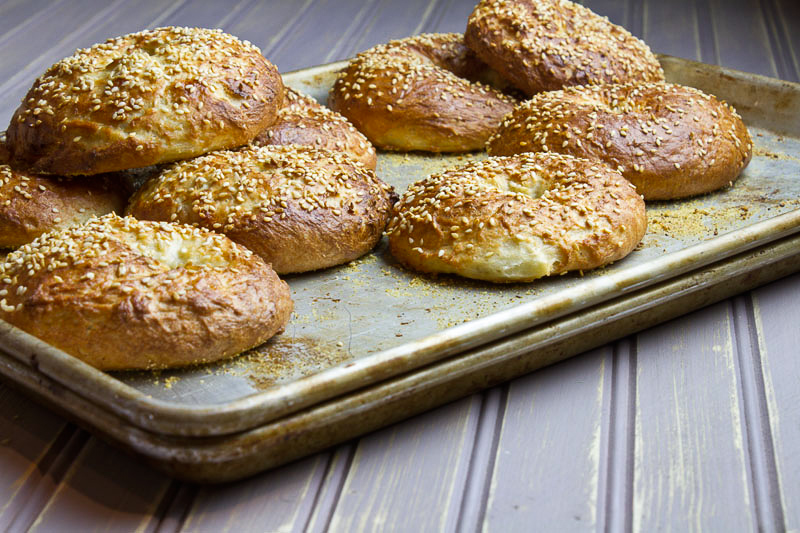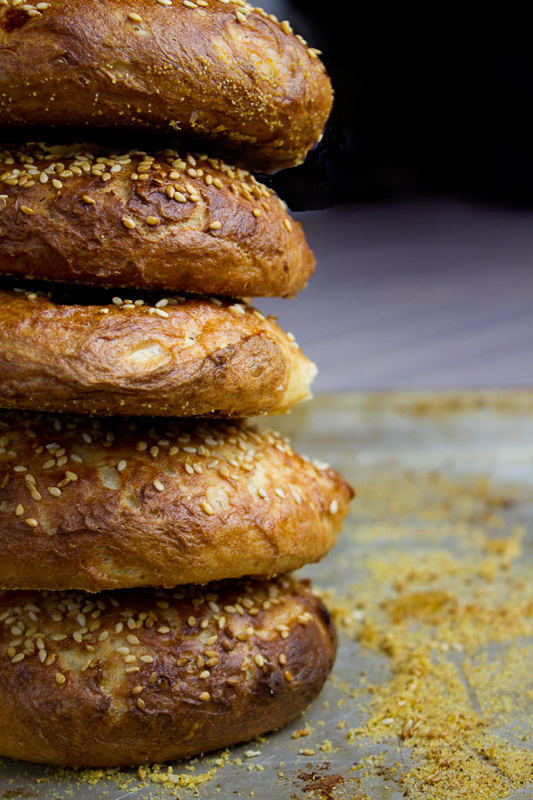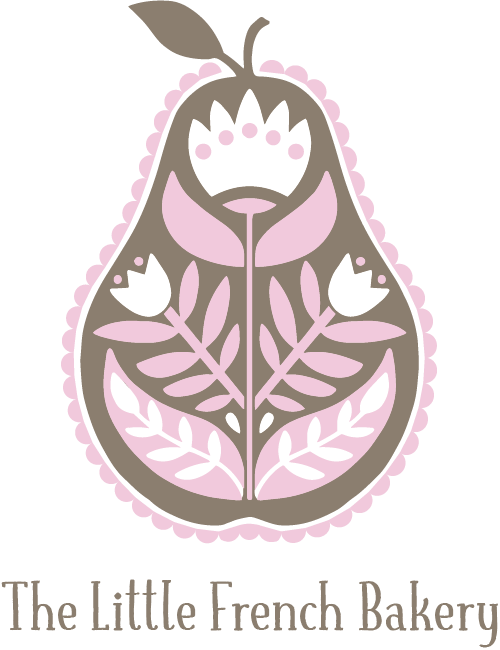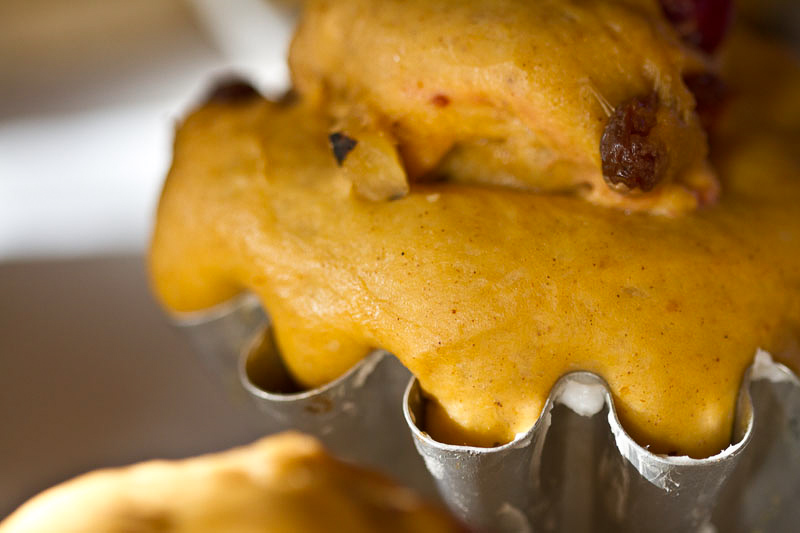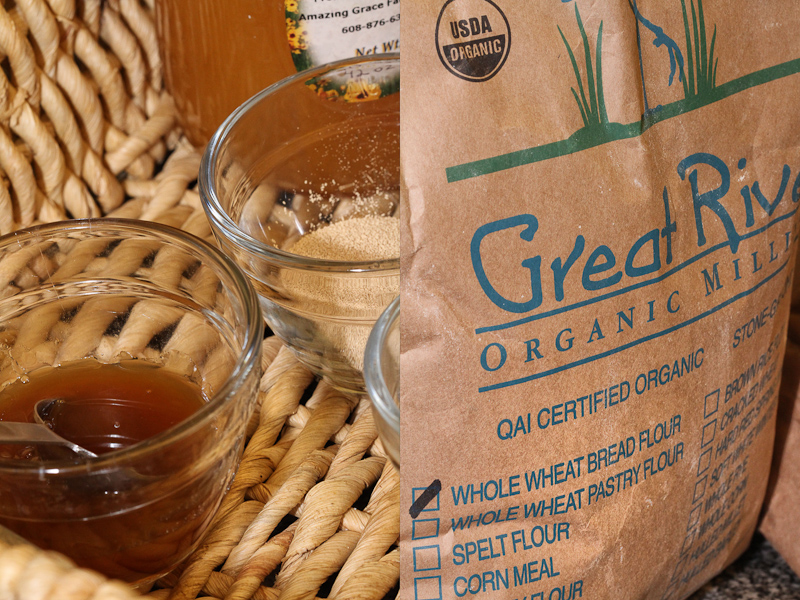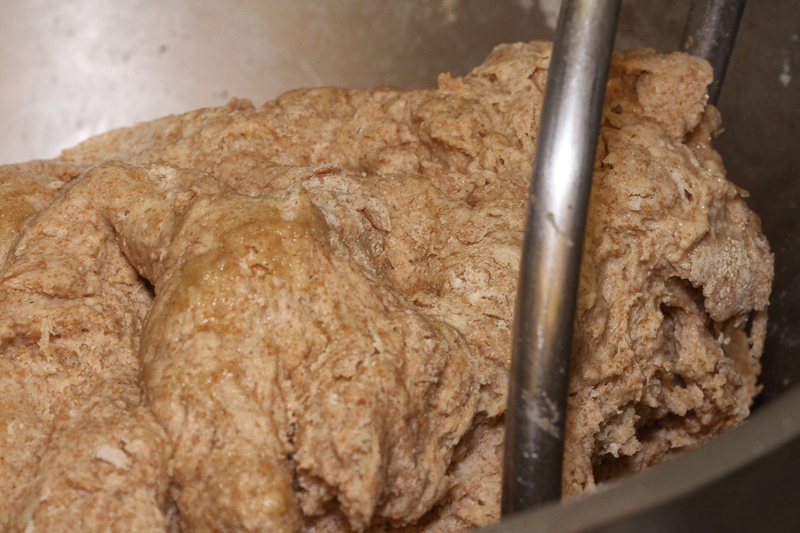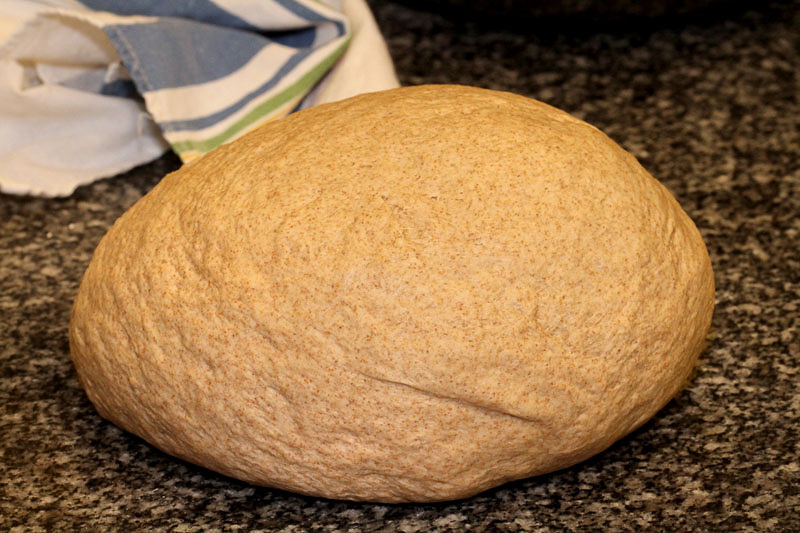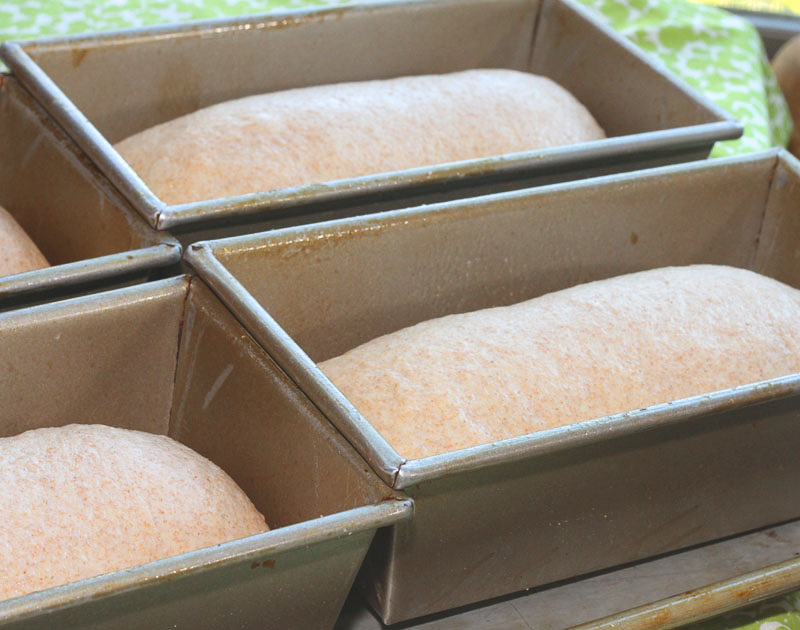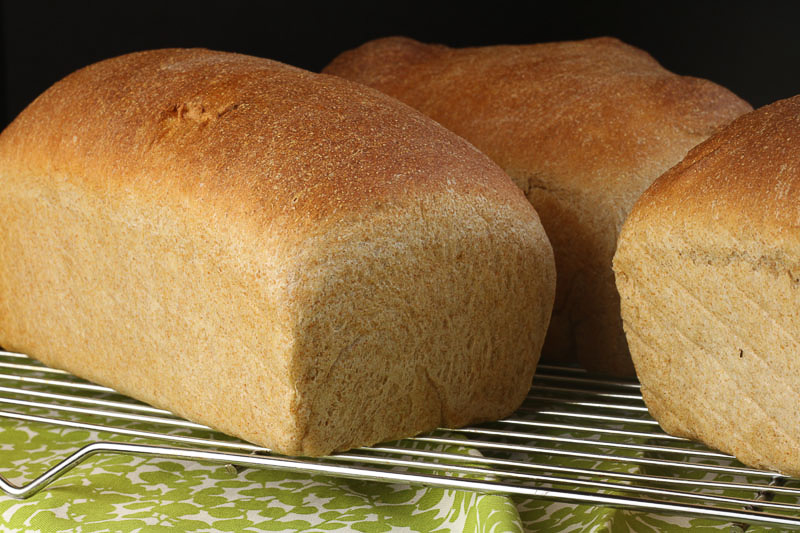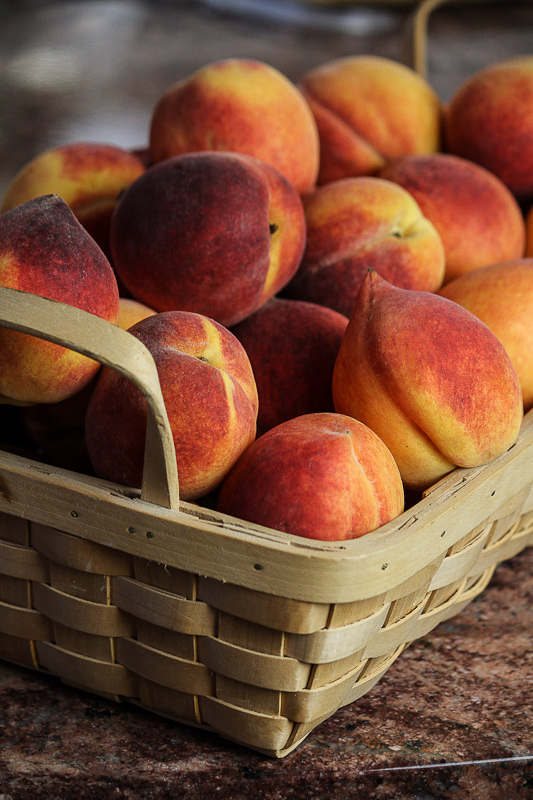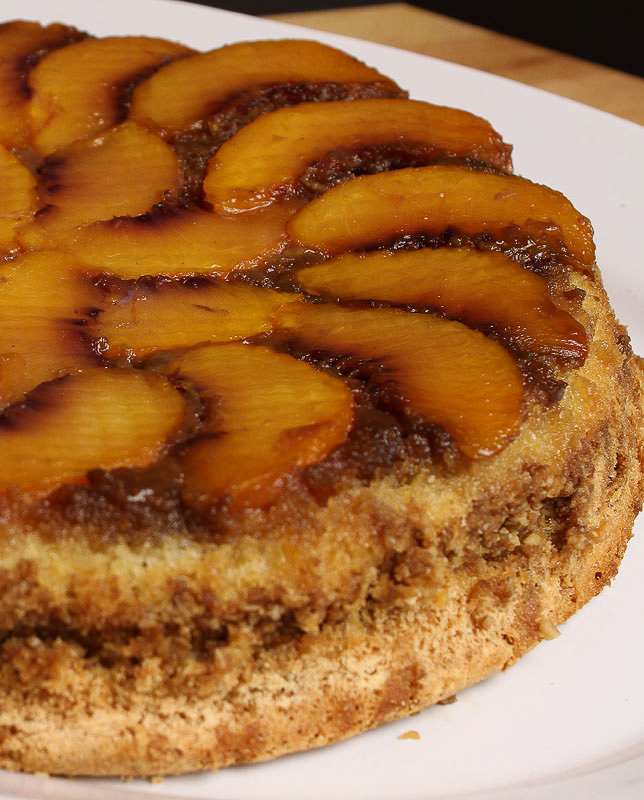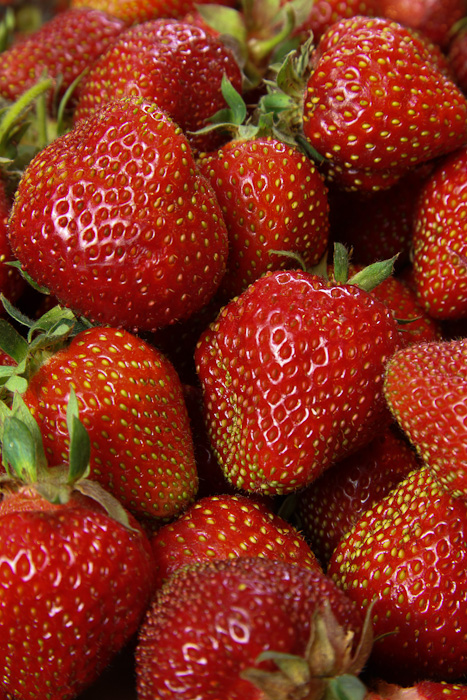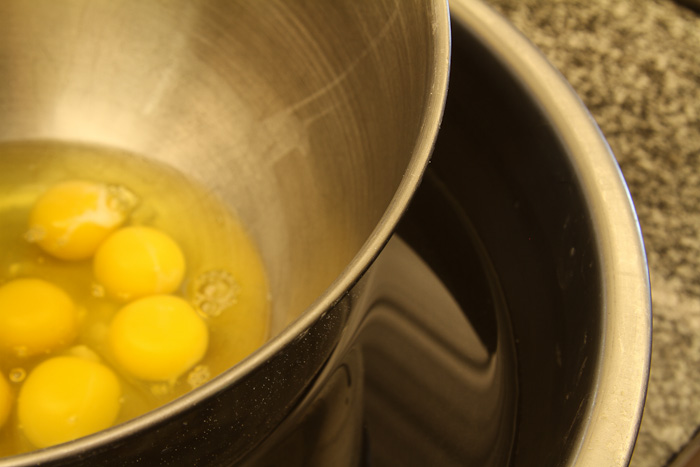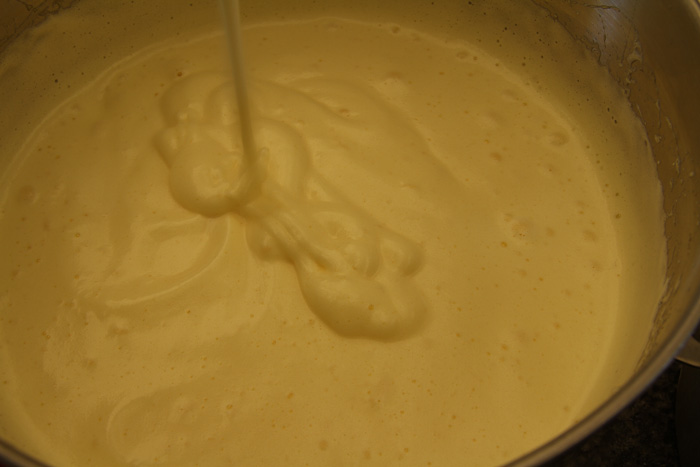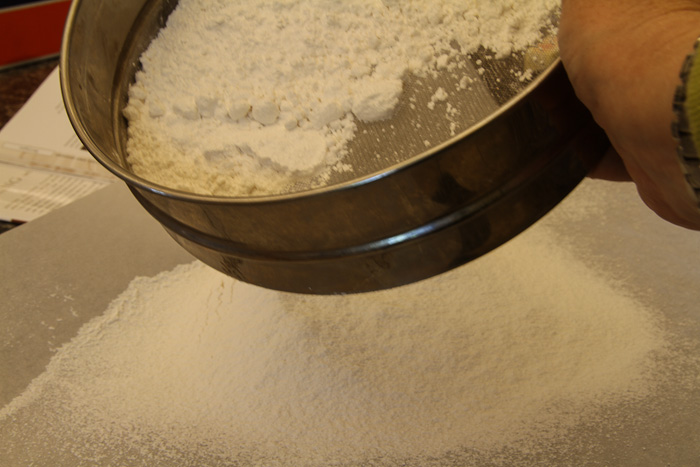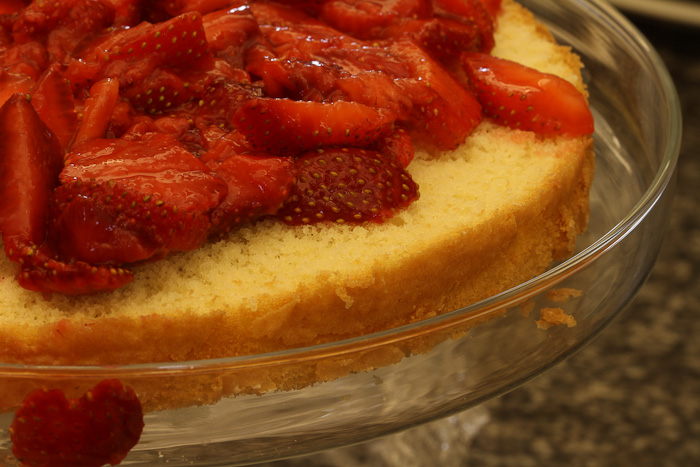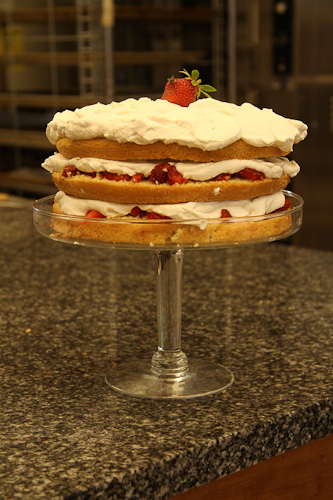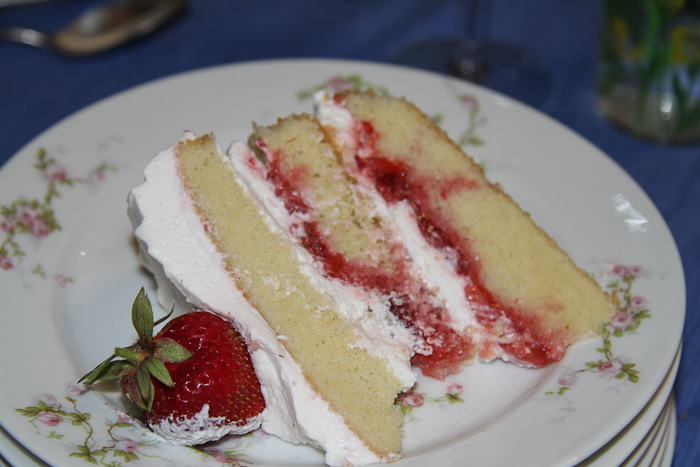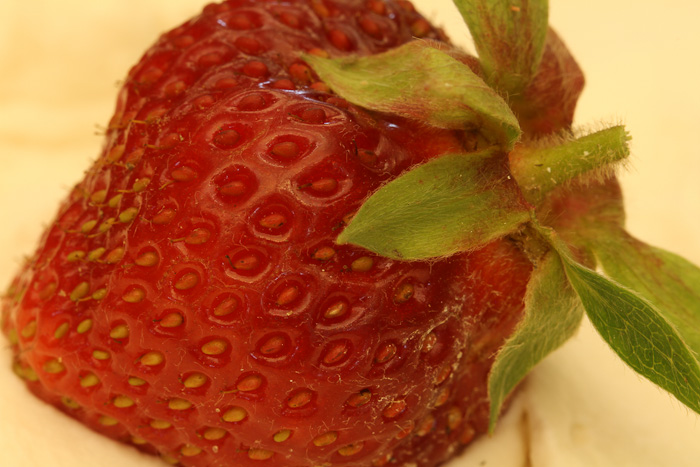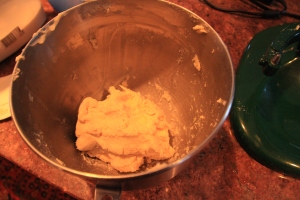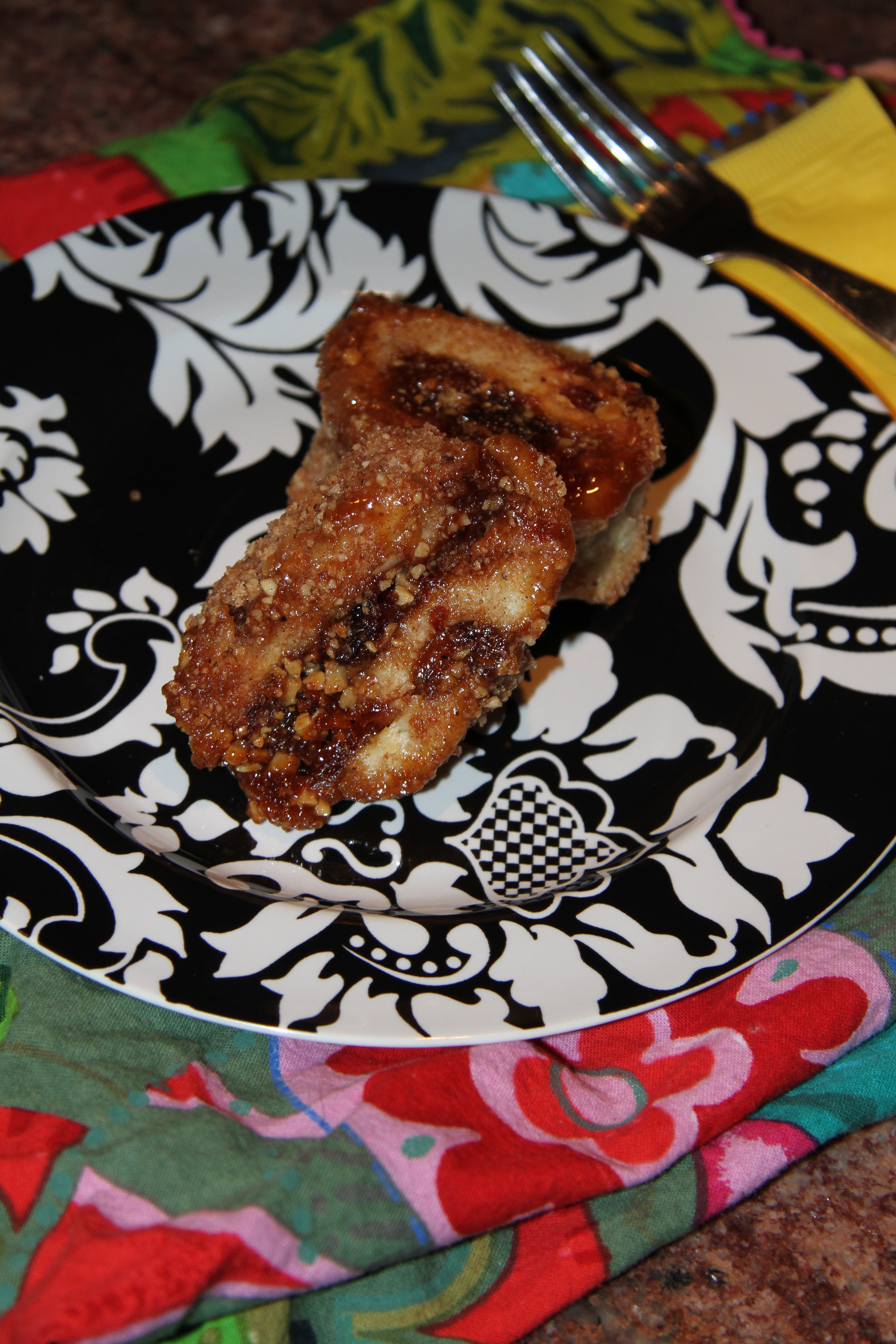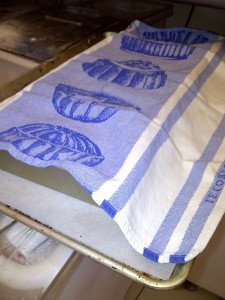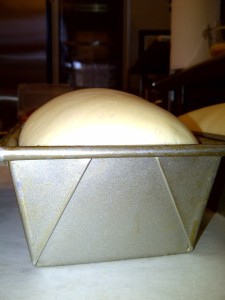You can see the little dimples from the bottom of the spring form pan. A sprinkle of streusel and the beautiful chiffon cake was finished.
To print this recipe, click HERE
Nectarine Upside-Down Chiffon Cake
For the Topping:
1/2 stick (2 oz) unsalted butter
1 cup, packed brown sugar
3-4 ripe medium nectarines (the number will depend on size), each cut into 8 pieces
Center a rack in the oven and preheat the oven to 325 degrees F.
Cut the butter into 3 or 4 chunks and toss them into a 10 inch springform pan that's 3 inches high. Place the pan directly over medium-low heat and melt the butter, tilting the pan so that the butter covers the bottom evenly. Remove the pan from the heat and scatter the brown sugar evenly over the butter, patting it down with your fingertips. Arrange the nectarine pieces in concentric circles over the sugar. For a fancier effect, alternate the way the nectarines face from circle to circle. Wrap the bottom of the pan in aluminum foil to catch any butter that might drip during baking and set the pan aside.
For the Streusel:
1/4 cup unblanched whole almonds
1/3 cup all-purpose flour
1/4 cup packed dark brown sugar
1 tsp cinnamon
1 tsp ginger
1/2 stick cold unsalted butter, cut into small pieces
1/2 cup quick cooking oats, (not instant)
Put the almonds on an ungreased jelly roll pan and bake them until golden brown and fragrant. About 10-15 minutes. Stir frequently so that they toast evenly. To test for toastiness, break on open, it should be light brown in the center. Cool the almonds before proceeding.
Line the jelly-roll pan with parchment paper and keep at the ready.
Put all the struesel ingredients, including the almonds, into the work bowl of the food processor fitted with the metal blade and pulse just to mix the ingredients and chop the almonds and butter. The mixture will be rough and crumbly. Spread the streusel out on hte pan and if you'd like to have a few largish lumps for textural interest, squeeze some the streusel lightly between your hands and then break the big clumps into smaller bits.
Bake the streusel for 10-15 minutes, stirring once or twice, until golden brown. Transfer the pan to a rack an cool while you make the cake. Keep the oven at 350 degrees F.
For the Cake:
1 1/2 cups sugar
1 cup all-purpose flour
1 tsp baking powder
1 tsp baking soda
1/4 tsp salt
4 large eggs, separated
1/2 vegetable or safflower oil
1/2 cup fresh lemon juice
2 large egg whites
Ice cream or whipped cream, for serving (optional)
Sift together 1 sup of the sugar, the flour, baking powder, and baking soda onto a sheet of parchment or waxed paper; add the salt.
In a large bowl, whisk together the yolks, oil, and lemon juice until blended. Gradually add the dry ingredients to the yolk mixture, whisking all the while; set aside.
Beat the 6 whites in the bowl of a mixer fitted with the whisk attachment, or work with a hand-held mixer. At low speed, beat the whites until thy're foamy and form very soft peaks. Increase the mixer speed to medium -high and gradually add the remaining 1/2 cup sugar, beating until the whites are thick and shiny and hold peaks. (If you run a finger through the whites, it should a leave a smooth, even path.) Fold about one third of the whipped egg whites into the yolk mixture to lighten it, then turn the yolk mixture into the whites and fold it in gently but thoroughly.
Baking the Cake: Pour and scrape half of the batter into the fruit-lined pan. Smooth the top, using an offset spatula, and sprinkle ever the streusel, keeping a little in reserve for decoration the finished cakes. Top with the remainder of the better, smoothing it with the spatula, an place the pan on a jelly-roll pan. Bake in the 350 degree oven for 45-50 minutes, or until golden and a toothpick inserted in the center comes out clean. Remove the cake to a cooking rack and let it cool for at least 25 minutes before inverting onto a cardboard cake round or a serving platter.
Serve the cake with ice cream or lightly sweetened whipped cream if desired and a sprinkle of the remaining streusel.
Storing: The cake is best served just warm or at room temperature the day it is made. However, you can cover the cake and keep i t at room temperature over-night.
Makes 8-10 servings. Contributing baker, Mary Bergin
